utgtrash
Straight
Yeah I’m sorry but I’m sure they are out there. Im really grateful I was able to get a hold of these.
Yeah I’m sorry but I’m sure they are out there. Im really grateful I was able to get a hold of these.
YeahThe snappers are best looking chip and it's not even close.
Next, I found these oversized ND orange (arc yellow) chips with orange inlays. I don’t have any of the chips with orange inlays that have a normal diameter, but these are definitely oversized. Can anyone confirm they have an orange inlay chip with the normal diameter?











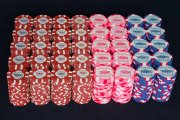
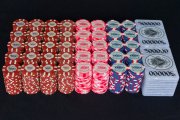
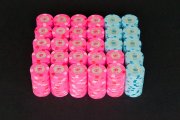
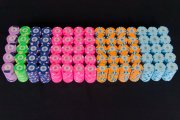
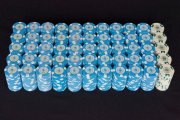
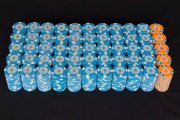
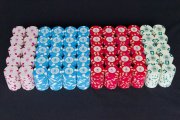
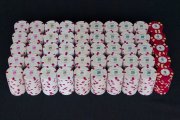
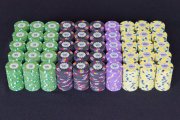
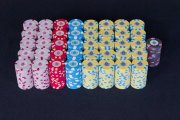
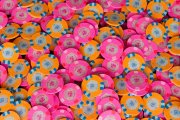
Hang on while I get my sunglassesWhen I posted my Protégé/Protege set earlier this year, I was just beginning to learn how to use a camera but didn't even know where to start for dialing in the camera settings. Unfortunately, the camera doesn't magically know that it's on a tripod shooting a stationary subject, so the camera's automatic settings dialed up the ISO so it could use a reasonable shutter speed with my dim lighting. On a 10+ year old entry level DSLR this wound up introducing significant noise to the photos. The conversion and compression to JPEG seemed to have softened or masked the most egregious noise, but the images were still full of noise. Since I'm not planning to drag the entire set out together for family photos again anytime soon, I was dissapointed by the relatively poor image quality. However, it turns out that software based denoising has gotten pretty powerful in the past few years. Denoisers will still degrade sharpness and introduce artifacts and they can make things look like plastic if they're too aggressive, but it seems like poker chips come out okay. I plugged my RAW image files into DxO PhotoLab and selected their fancy denoiser and left everything else at their default settings, which do things like correct lens aberrations and try to make things look nice. To my eye the default settings got a little aggressive with how bright they made the pinks, but I'm sure I can figure out how to go in and adjust that. All things considered I think the pics came out much better after the denoise processing. As an added bonus, the denoised images are much easier to compress in JPEGs, so I could use a higher "quality" while achieving smaller file sizes. I don't know anything about how image compression works, but in general this makes sense to me since noise should appear to be random and truly random data is effectively unable to be compressed with lossless techniques. It seems that JPEGs also struggle to efficiently compress noise with their lossy algorithms. At any rate, I like the pics. You can see the originals here.









When I posted my Protégé/Protege set earlier this year, I was just beginning to learn how to use a camera but didn't even know where to start for dialing in the camera settings. Unfortunately, the camera doesn't magically know that it's on a tripod shooting a stationary subject, so the camera's automatic settings dialed up the ISO so it could use a reasonable shutter speed with my dim lighting. On a 10+ year old entry level DSLR this wound up introducing significant noise to the photos. The conversion and compression to JPEG seemed to have softened or masked the most egregious noise, but the images were still full of noise. Since I'm not planning to drag the entire set out together for family photos again anytime soon, I was dissapointed by the relatively poor image quality. However, it turns out that software based denoising has gotten pretty powerful in the past few years. Denoisers will still degrade sharpness and introduce artifacts and they can make things look like plastic if they're too aggressive, but it seems like poker chips come out okay. I plugged my RAW image files into DxO PhotoLab and selected their fancy denoiser and left everything else at their default settings, which do things like correct lens aberrations and try to make things look nice. To my eye the default settings got a little aggressive with how bright they made the pinks, but I'm sure I can figure out how to go in and adjust that. All things considered I think the pics came out much better after the denoise processing. As an added bonus, the denoised images are much easier to compress in JPEGs, so I could use a higher "quality" while achieving smaller file sizes. I don't know anything about how image compression works, but in general this makes sense to me since noise should appear to be random and truly random data is effectively unable to be compressed with lossless techniques. It seems that JPEGs also struggle to efficiently compress noise with their lossy algorithms. At any rate, I like the pics. You can see the originals here.









